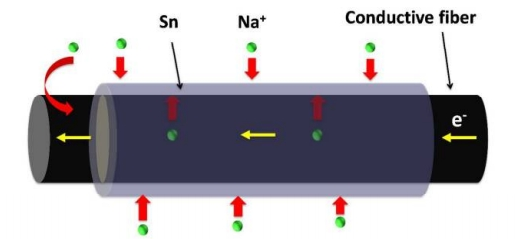If you want to list an advanced material that can be used as a high-tech application, no one should think that wood will be among the best.
Recently, the experiments of Teng Li and Liangbing Hu of the University of Maryland may be able to do this. Their experiments show that if wood can be effectively used, sodium batteries can be successfully introduced to replace the existing lithium batteries, which greatly reduces battery production costs.
Wrap a piece of wood with tin to make a tiny, long-lasting battery. This is not impossible. However, you must not think you can do it at home. The University of Maryland experimental assembly uses less than one-thousandth of the thickness of a piece of paper.
The amount of electricity stored is also not comparable to lithium, so don't expect that the battery can be used on a cell phone, but it's low cost, materials are everywhere, and can be used to store large amounts of energy.
Hu Liangbin, an assistant professor of materials science at the university, said: “Inspiration comes from trees. The trees are made of wood fibers. Once inhaled with mineral-rich water, it becomes an ideal material for storing liquid electrolytes. It can become the basis of batteries, and at the same time Is the activity part."
The chemical properties of lithium and sodium are very similar, except that the volume of nano-ions is 5 times that of lithium ions. This is a big problem when it comes to making batteries because the battery will shuttle ions between the positive and negative electrodes. The larger the ions, the greater the damage caused by the shuttle and the shorter the battery life, so sodium cannot be used to make battery. But engineers still hope to develop commercial sodium batteries because sodium reserves are much higher than lithium.

Dr. Li and Dr. Hu would like to know if they could reduce the electrode damage by using a softer material to make the electrode frame. This kind of frame is usually made of metal and therefore very hard, but two researchers believe that treated wood can have the same good conductivity, but also can provide better support for the ever-expanding, reducing electrode.
They used yellow pine flakes for testing. The carbon nanotubes were used to cover the sheets to improve the conductivity of the sheets. Then, a tin layer was added to each sheet. After the completion, the sheets were placed in an electrolyte containing sodium ions for 400 cycles. Discharge. The control group is a similar battery made of copper foil.
The wooden battery is not perfect; its initial capacity is 339mAH/g, but after 400 cycles of charging and discharging, there is only 145mAH/g left. However, the preliminary prototype has been considered quite good, and its performance far exceeds that of the copper frame battery; the initial capacity of the copper frame battery is 50mAH/g, and it drops to 22mAH/g after 100 cycles of charge and discharge.
Of course, there should be no wooden frame battery in your cell phone and laptop in a short period of time, but that would not have been the plan of the two researchers. Their research will contribute to the development of large-scale sodium-ion batteries that can be used to store electricity from solar power plants.
Adjustable Deck Pedestal,Taurus Adjustable Paver Pedestal,Adjustable Paver Plastic Pedestal,Self Level Deck Pedestal
Jiangxi Taurus Technology Co., Ltd , http://www.chinapedestal.com